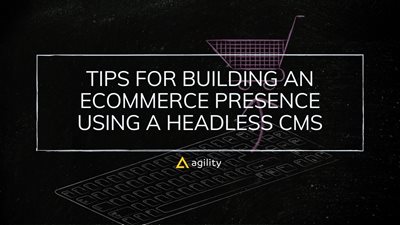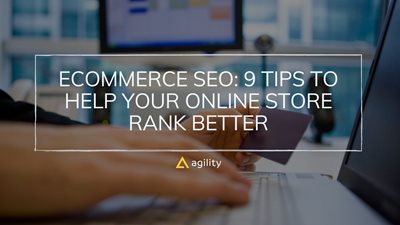How to Successfully Implement Headless Commerce for Your Online Store (Without Losing Your Head)


Decapitate Your E-Commerce Limits
Imagine your online store as a body. In traditional e-commerce, the head (the front-end that customers see) is firmly attached to the body (the back-end systems). Headless commerce removes this dependence on a single head, allowing the body to connect to any head it wants. It sounds like a B-grade horror movie, but it’s actually pretty cool—and a whole lot less messy.
Headless commerce isn't a fad; it's the future. It's taking the e-commerce world by storm faster than you can say, "Where's my shopping cart?" Recent industry statistics show explosive growth in the headless CMS market. Over 60% of organizations already use a headless CMS, and the market is projected to reach a staggering $1.3 billion by 2025. That's ‘billion’ with a 'B,’ folks!
So, buckle up whether you're a small business owner looking to upgrade your e-commerce game or a corporate bigwig aiming to drag your online presence into this century - your store’s about to get more flexible than a Cirque du Soleil performer!
1. Preparing for Headless Commerce
Before diving into the tech, you need to prepare your business for this transition. Think of it like stretching before a marathon—except instead of touching your toes, you’re reaching for the future of e-commerce. Exciting, right?
Here's what you need to consider:
-
Business objectives: What are you trying to achieve? Faster site speed? Better personalization? The ability to sell to Martians? (Okay, maybe not that last one... yet.)
-
Current pain points: What's giving you headaches? Is your site slow? Do updates take forever? Are you struggling to provide a seamless experience across platforms? Identifying what’s broken will help you decide what to fix.
-
Scope of Implementation: Will you start with just a few elements or go all-in from day one? Start small if needed—Rome wasn’t built in a day, and neither is your headless commerce empire.
Remember, 78% of businesses believe that a headless CMS helps them future-proof their digital experiences. So you're not just keeping up with the Joneses - you're preparing to leave them in your digital dust.
2. Choosing the Right Technology Stack
Now for the fun part - choosing your tech! It's like online dating, but instead of swiping right on potential soulmates, you're swiping right on the future of your business. No pressure.
Here's what you need in your digital toolbox:
-
Headless CMS: Look for one that's as flexible as a yoga instructor and as reliable as your favorite pair of jeans. 57% of developers find headless CMS more flexible than traditional systems - and developers know their stuff!
-
E-commerce platform: Choose wisely - this is the engine of your digital money-making machine. Popular options include Shopify Plus and Magento, but pick the one that fits your needs like a glove.
-
APIs and microservices: The digital glue holding everything together. Pick ones that play nice with others - we don't need any playground bullies here.
-
Front-end framework: React, Angular, Vue.js - pick your poison. Just make sure your developers don't start a holy war over it.
Remember, the goal here is to create a tech stack that's more flexible than a gymnast and smarter than a room full of rocket scientists.
3. Planning the Implementation Process:
It's time to plan this shindig! By shindig, we mean the carefully orchestrated process of implementing your headless commerce solution. It's like planning a wedding, but with more code and fewer drunk uncles.
Key elements to consider:
-
Project timeline: Break it down into phases. Rome wasn't built in a day, and neither is a killer headless commerce setup.
-
Team assembly: Build your A-team. Think of it as the Avengers, but for e-commerce. Assemble!
-
Roles and responsibilities: Make sure everyone knows their part. We don't want your back-end developers suddenly deciding they're in charge of UX design. Trust us on this one.
-
Collaborative workflow: Set up a system where your front-end and back-end teams can work together smoother than a well-oiled machine. Think shared repositories, regular stand-ups, and enough coffee to fuel a small country.
4. Designing the Front-End Experience:
This is where the magic happens, folks. It's time to make your store look so good that customers want to lick their screens. (Please don't encourage this behavior - it's unsanitary and bad for monitors.)
Here's what's hot in e-commerce personalization:
-
AI-powered recommendations: Who doesn't want a mind-reading store?
-
Privacy-first strategies: Keep it personalized, but don't be creepy.
-
Omnichannel experiences: Be everywhere your customers are, like a friendly stalker.
-
Hyper-personalization: Make your customers feel special. Like the "this-store-knows-me-better-than-my-therapist" special.
And don't forget about Progressive Web Apps (PWAs)! These bad boys combine the best web and mobile apps, giving your customers a smooth, fast experience that'll make them wonder if you've secretly replaced their device with a supercomputer.
Remember, some implementations have seen a whopping 130% increase in mobile revenue and conversion rates after adopting headless commerce. That's not just a win - it's a home run, slam dunk, and hole-in-one all rolled into one!
5. Developing and Integrating APIs
APIs are headless commerce’s secret sauce. They're like the invisible waiters of your digital restaurant, seamlessly moving information back and forth without customers even noticing.
Here's what you need to focus on:
-
Understanding API roles: APIs are the bridges between your front-end and back-end. Know which ones you need and how they'll work together.
-
Custom API development: Sometimes, off-the-shelf just won't cut it. Don't be afraid to develop custom APIs for those unique features that make your store special. It's like tailoring a suit - sure, it takes more effort, but it looks sharp!
-
Third-party integration: Whether it's payment gateways or shipping providers, make sure your APIs play nice with others. We're building a digital ecosystem here, not a walled garden.
But here's the catch: with great APIs comes great responsibility. The latest trends in API security include
-
AI and machine learning for real-time threat detection
-
Continuous API discovery and monitoring,
-
Shift-left security approach (because catching bugs early is better than squashing them later).
Remember, in the world of APIs, you want to be Fort Knox, not a cookie jar with a "PULL HERE" sign.
6. Ensuring Data Security and Compliance:
Let's talk security. It's not the sexiest topic, but neither is explaining to your customers why their data is now on a billboard in Times Square.
Key security measures:
-
Implement authentication stronger than Fort Knox
-
Encrypt data like you're protecting the recipe for Coca-Cola
-
Update and patch your systems more often than a teenager checks their phone.
And don't forget about those pesky data protection regulations. GDPR and CCPA aren't just alphabet soup - they're the law. Comply or prepare to pay (literally).
7. Testing and Optimization:
It’s time to test your creation. Think of it as sending your digital baby off to school—you want to ensure it plays well with others and doesn't fall flat on its face.
Your testing to-do list:
-
Unit testing: Check each piece individually. You wouldn't build a car without testing each part, would you?
-
Integration testing: Make sure all parts work together. It's like making sure your band can play together before the big gig.
-
Performance testing: Can your store handle a Black Friday stampede without breaking a sweat?
-
User acceptance testing: Get real humans to test it. Yes, actual humans, not just your developer's cat walking across the keyboard.
Remember, headless commerce can significantly boost your SEO game. But beware of pitfalls like broken links, rendering issues, and duplicate content. Keep your SEO hat on throughout the process!
8. Launching Your Headless Commerce Store
The big day is here! It's time to unleash your headless wonder upon the world. Consider a phased rollout—it's like a restaurant's soft opening but with less free food and more bug fixes.
Key steps:
-
Customer communication: Keep your customers in the loop. Nobody likes surprises unless it's a surprise party with cake.
-
Team training: Ensure your team knows the new system inside and out. We're aiming for "tech wizard" status here.
-
Feedback collection: Listen to your customers. They're usually right, except when they're not.
Conclusion
Congratulations! You've successfully navigated the wild world of headless commerce implementation. Your store is now more flexible than a gymnast. But remember, Rome wasn't built in a day, nor is the perfect headless commerce setup. Keep tweaking, improving, and updating your systems until you get closer to your ideal.
The future of headless commerce is bright, with an increased focus on omnichannel experiences and even more mind-blowing personalization right ahead. So, by adopting the headless wave now, you're not just keeping up with the trend—you're surfing the wave into the future!
Ready to take the plunge into headless commerce? Don't let the tech jargon scare you off. Reach out to one of our Agility CMS experts today and start your journey toward e-commerce nirvana. Your customers (and future self) will thank you - probably not with a fruit basket, but increased conversion rates are just as sweet!

About the Author
Mauro Flammini is the Content Manager at Agility CMS. He has over 20 years of content marketing experience, including for international brands such as Research In Motion and Intuit. He lives in Hamilton, ON with his wife, two daughters, and one dog.



